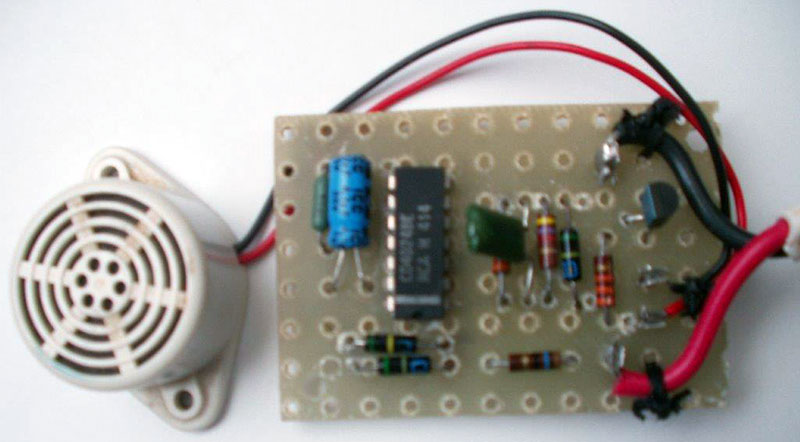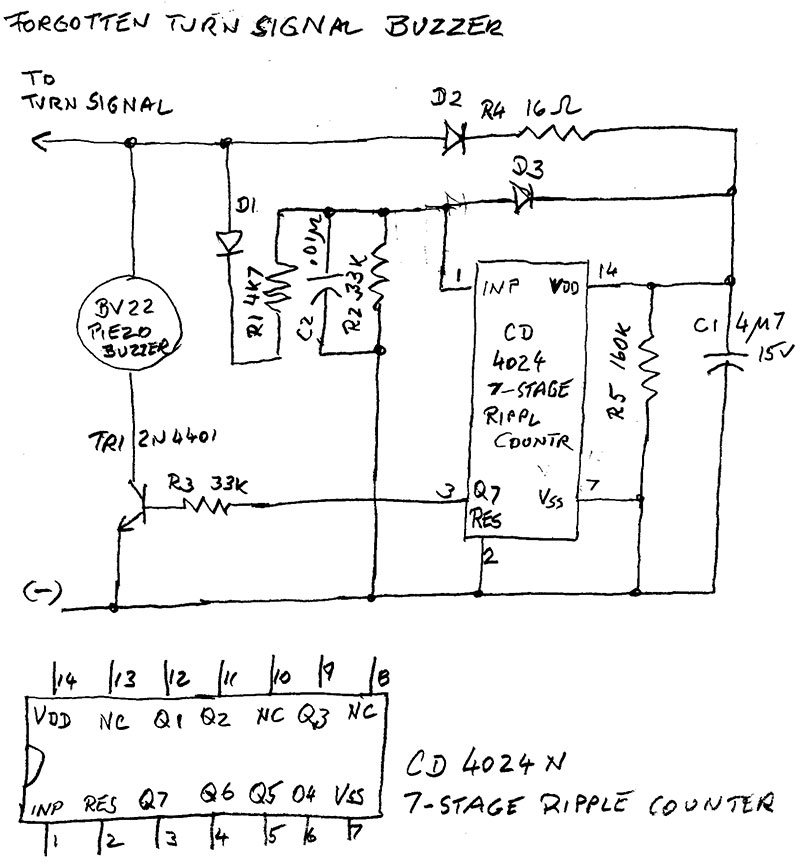Sounds like a job for an Arduino Pro Mini and a few discrete parts.
First you need to convert the on-off 12V turn-signal levels from the lamps or LEDs to 5V logic levels. You can find level-shift circuits via a Google search. Then you’ll have two sets of pulses, one from the left signal and one from the right signal. Run the 5V logic signals to two inputs on the Arduino Pro Mini.
Second you need a control program that determines what to do with these pulses and when to turn on an indicator (visual or audible). When the software detects a pulse on either input it starts two timers, Timer1 for 2 minutes and another (Timer 2) for about 1.5 times the length of a turn-signal on-off period (1.5 times the flash duty cycle). Each incoming pulse restarts Timer2. So as long as the Arduino Pro Mini receives turn-signal pulses, Timer2 continues to run. If at the end of the 2-minute period Timer2 is still running, the indicator turns on. The indicator turns off as soon as Timer2 stops running. That indicates no more pulses from the turn signal.
As an alternate, an Arduino Pro Mini could simply count the number of pulses that occur for your vehicle in a 2-minute period and when the count equals that number, it turns the indicator on. You might include a “kill” switch for the indicator in case you need to keep the emergency flasher on for more than 2 minutes. For more information about the Arduino Pro Mini, visit: https://www.sparkfun.com/products/11113.


